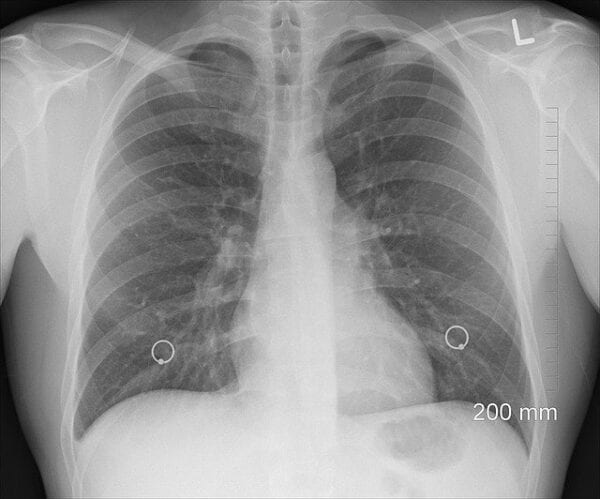I had this question the other day about the extent of tiotropium systemic absorption and I had to double-check. I knew that there was some, but wasn’t sure how prevalent it was.
According to an older article, the tiotropium systemic absorption is approximately 20% (19.5% to be exact). The more important question is what does this mean for our patients?
Tiotropium is an inhaled anticholinergic medication. By far, its most commonly used indication is COPD. COPD is typically a diagnosis in older patients where anticholinergic adverse effects can be troublesome. I assess and ask patients about anticholinergic side effects whenever I’m given the opportunity. Specifically, I ask about dry eyes, dry mouth, CNS changes, urinary retention, and constipation. Many times I can tell from the medication list that they may be having these issues (i.e. use of artificial tears, dementia medications, BPH medications, laxatives, etc.).
While I generally feel like the likelihood of tiotropium causing systemic anticholinergic adverse effects is low, a higher anticholinergic burden from other medications can complicate things. Patients taking diphenhydramine for insomnia or oxybutynin for urinary frequency are two common examples of frequently used anticholinergics in older patients. These can combine with tiotropium to add to a patient’s anticholinergic burden and enhance the potential to experience those adverse effects.
What do we do about the tiotropium if they are experiencing anticholinergic effects? The answer is probably nothing to the tiotropium. I’m going to assess whether any other anticholinergic medications can be reduced or removed first. Those oral agents (i.e. diphenhdramine, oxybutynin, etc.) are much more likely to contribute to the anticholinergic burden than tiotropium.
One other consideration is to look at renal function. There is a small, but potentially significant amount that may be excreted in the urine and if the kidneys are compromised, concentrations (and risk for adverse effects) may be higher than in patients with normal renal function.
In summary, tiotropium systemic absorption is relatively low and the likelihood of experiencing systemic anticholinergic effects is fairly low. In the event of significant anticholinergic effects, I’m going to assess the patient’s medication regimen and in most cases, I will find other anticholinergics on their list in addition to the tiotropium.
- 30 medication mistakes PDF
- 18+ Page Drug Interaction PDF
- 10 Commandments of Polypharmacy Webinar based on my experiences in clinical practice



Thanks for the update
What about other medications like SYMBICORT and FLONASE for patients with mild COPD or gMG …..
Thank you